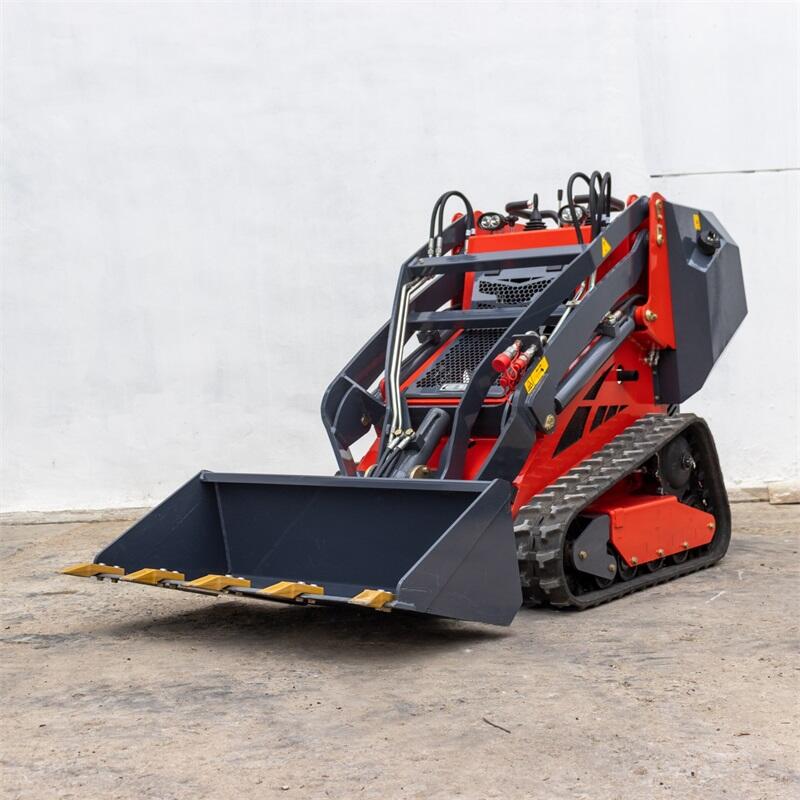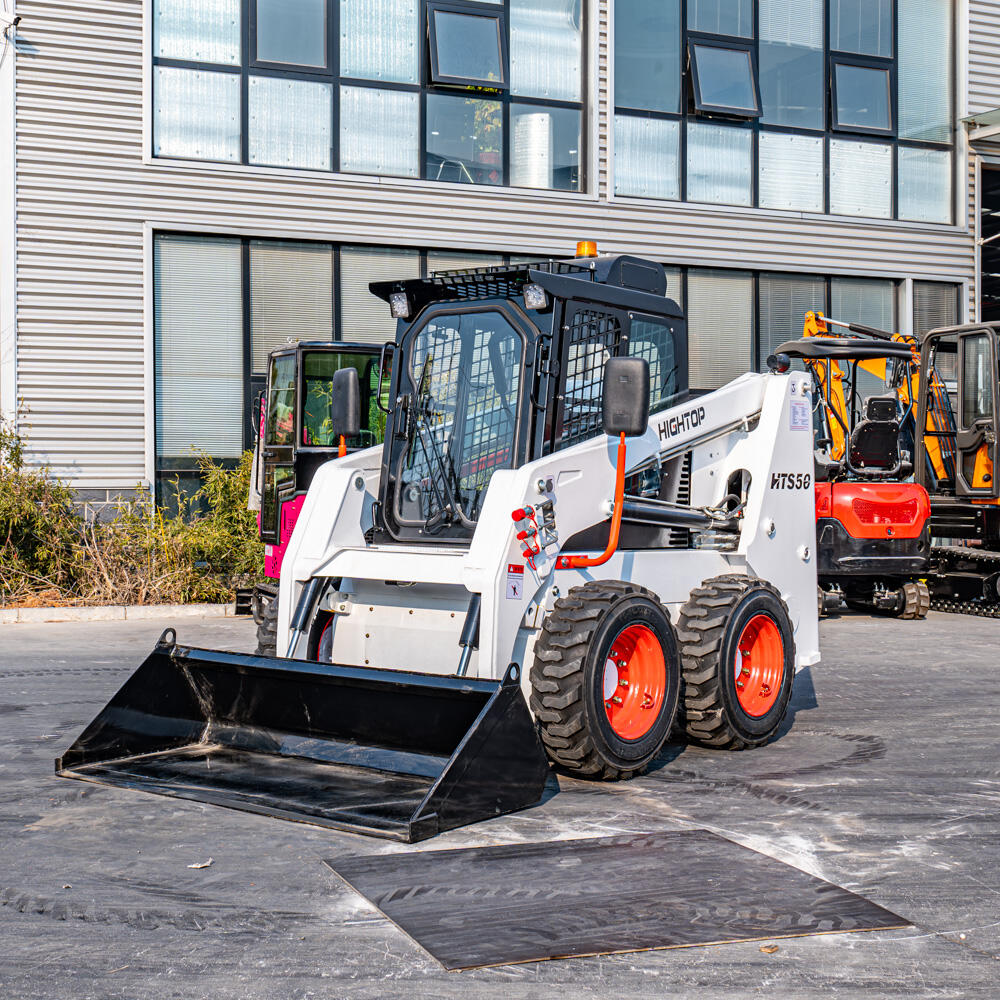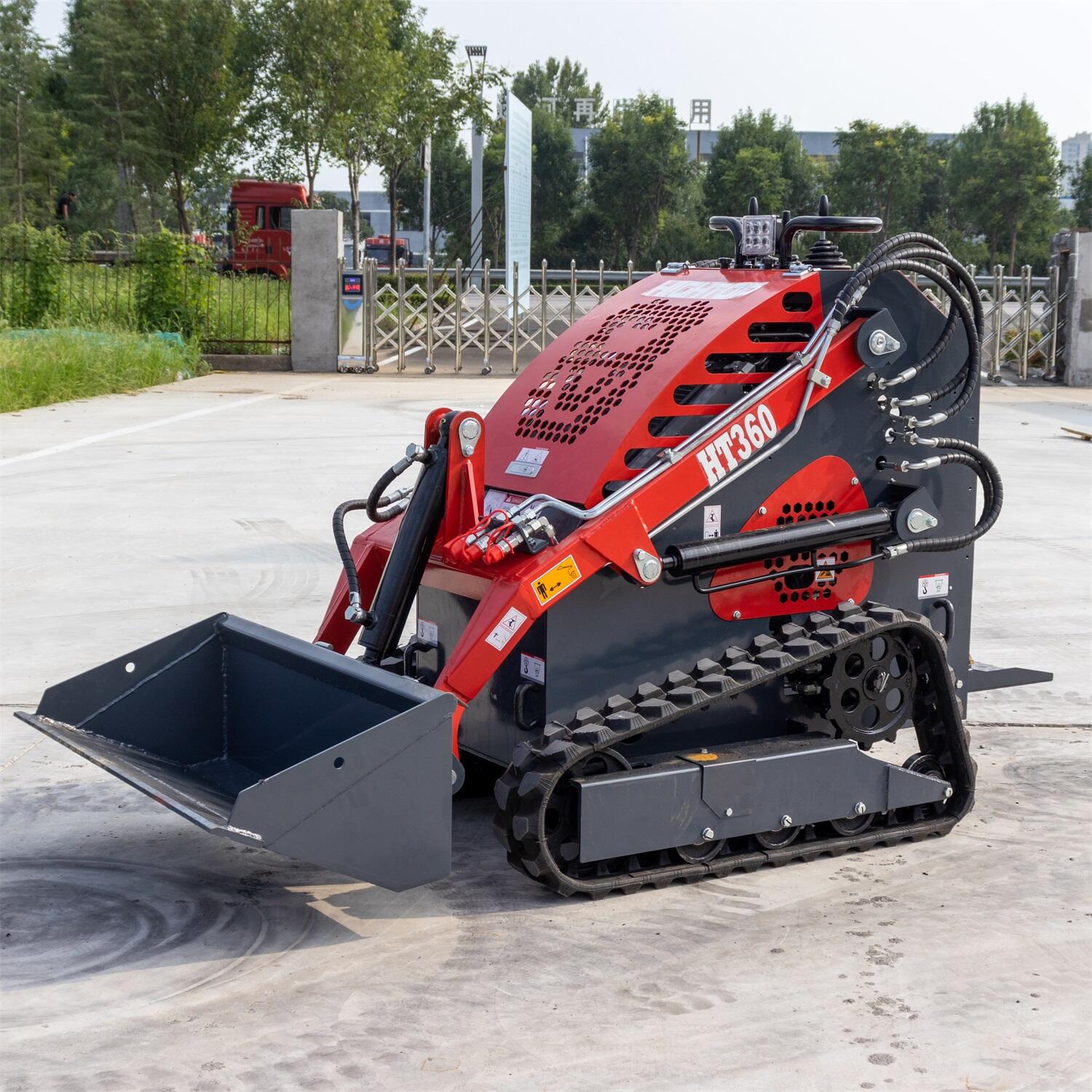Are Skid Steer Loaders Powering Through Demanding Tasks?
Engineered for Excellence: Skid Steer Loader Performance Features
Advanced Hydraulic Systems for Maximum Efficiency
The hydraulic systems in skid steer loaders form the core of what makes these machines so effective at getting work done quickly even when things get tough. Most models come with pumps designed to cut down on energy waste, which helps boost productivity across the board. When manufacturers integrate better control over how fluid moves through the system, they actually improve both engine performance and how efficiently the machine operates day to day. Some recent improvements in this area have reportedly increased efficiency by around 20%, though actual results vary depending on conditions. These upgrades mean jobs get finished faster while burning less fuel, something that matters a lot in construction sites or agricultural settings where time and money count. For anyone running equipment regularly, investing in good hydraulics isn't just smart it's practically essential if they want to get the most out of their skid steer over the long haul.
Lift Capacity and Stability in Heavy-Duty Applications
Skid steer loaders can lift some serious weight, usually over 3,000 pounds, which makes them great for tough jobs around construction sites or warehouses. What really stands out though is how stable they stay despite all that lifting power. Most models have a low center of gravity built right in, so operators don't have to worry about tipping hazards while working with heavy loads. When moving things like pallets of bricks or large machinery parts, this stability keeps everything balanced. Compared to older loader designs, modern skid steers handle both lifting and balancing much better. Contractors love them because they get the job done faster without compromising safety. That's why we see these machines everywhere from agricultural fields to urban demolition projects where getting things done safely matters most.
Terrain Adaptability: From Soft Soil to Rugged Landscapes
Skid steer loaders show their true versatility when they handle all sorts of different ground conditions, whether it's muddy fields or really rough mountainous areas. The modern track systems give them great grip and balance even when working on bumpy or sloped surfaces. Contractors know this matters a lot - recent industry reports suggest something like 75% or more of people buying this equipment look specifically for machines that can handle multiple types of terrain. These machines perform well no matter what kind of obstacles come up during jobs, which makes them essential tools across many construction sites. Because they work so well in varied conditions, skid steers have become standard equipment for any job site where flexibility and reliability are needed day after day.
Multi-Functional Powerhouses: Attachments and Versatility
Quick-Change Systems for Seamless Attachment Swapping
The quick change attachments really boost how efficient skid steer loaders become since they let workers switch between different tools super fast. Less downtime means everything runs smoother at those hectic construction sites where every minute counts towards the bottom line. According to field reports, people working with these machines save around 30 percent of their transition time because swapping out equipment takes so little effort now. Newbies get used to operating skid steers much quicker too, since manufacturers have made sure most models include controls that are easy to figure out. Just grab the tool you need and go without wasting precious minutes reading manuals or fumbling with complicated mechanisms.
Specialized Attachments for Niche Applications
What makes skid steer loaders so valuable on job sites? Look no further than the wide range of attachments available for these machines. From grapples and augers to snow plows and trenching tools, there's an attachment for almost every task imaginable. These add-ons really open up what skid steers can do, solving specific problems across different industries. The market for these attachments keeps expanding fast too. Recent data shows around 45 percent of all new skid steer sales come with some kind of specialty attachment already attached. Getting the right tool for the job matters a lot when it comes to getting work done efficiently. A landscaping crew might need something completely different from what a construction site requires, and knowing this difference saves time and money in the long run.
Top-Performing Skid Steer Loaders for Demanding Jobs
HTS450 Crawler Skid Steer Loader: Built for Endurance
The HTS450 stands out among skid steer loaders thanks to its solid build quality and capacity to handle brutal conditions without breaking down. Built for serious construction work, this machine comes equipped with a strong Briggs & Stratton 23HP engine made right here in the USA. The V track system with eight wheels really makes a difference when operating on rough ground or muddy job sites. What sets the HTS450 apart from other models is how well it holds up over time. Many operators report getting significantly more hours out of their HTS450 compared to similar machines from competing brands, which speaks volumes about both its engineering and overall reliability in real world scenarios.
HTS50 Skid Steer Loader: Compact Design with High-Flow Hydraulics
The HTS50 really shines because of how compact it is, which makes all the difference on tight job sites where space is at a premium, especially in crowded city settings. Even though it doesn't take up much room, this little machine packs some serious punch with its high flow hydraulics system. That means it can handle pretty much any attachment that comes along for the ride on those skid steer loaders. What's great about this setup is that workers can swap out tools quickly throughout the day without losing momentum. Construction crews working on mixed use developments find this particularly handy when they need to go from digging trenches one minute to grading surfaces the next.
HTS360L Mini Wheel Loader: Ergonomic Operation in Tight Spaces
The HTS360L puts comfort first for operators who spend long hours at work. Its design helps reduce tiredness when working all day because everything is positioned just right. As a mini skid steer loader, it really shines when moving around tight spots that bigger equipment simply can't reach. Think about those cramped warehouses or narrow construction sites where space is limited. The controls are straightforward to learn, and regular maintenance checks take less time than most similar models. For jobs that need careful positioning and quick movements, this machine delivers exactly what's needed without unnecessary complexity.
Ensuring Longevity: Maintenance and Durability Considerations
Routine Maintenance Checks for Optimal Performance
Keeping up with regular maintenance is really important for getting the most out of skid steer loaders. Checking fluids, looking over all the parts, and sticking to a maintenance schedule does more than just keep things running smoothly it actually helps these machines last much longer. Most operators find that when they take care of their equipment properly, they get around twice as many hours out of it before needing major work or replacement parts. That kind of savings adds up fast over time. When someone takes the time to run through those routine inspections, they spot problems early on before they become big headaches. This means less time sitting idle waiting for fixes and more productive work days with reliable machinery performing exactly how it should.
Robust Construction Materials for Extended Service Life
Building a skid steer loader with tough materials really matters when it comes to how long the machine lasts and stays reliable. The best materials can handle rough conditions at job sites, which means the loader won't break down as easily. Some studies show machines built with quality parts tend to last around 30% longer before needing major work. For contractors who want their investment to pay off, spending extra on good construction pays dividends in the long run. Less downtime for fixes and fewer replacement costs add up to real money saved over years of operation.




